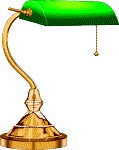CHARACTER NAMING SOURCEBOOK,
by Sherrilyn Kenyon with Hal Blythe and Charlie Sweet.
Published by The Writer’s Digest, Ohio, 1994. 360 pp.
My copy was sent by a US friend, as “swaps” for an
Australian sci fi title she couldn’t buy locally.
This is a fat and fascinating compendium of names from
various sources. Unlike the usual baby-naming book,
this one is specially for writers, and includes advice on
the appropriate naming of characters. As the author of
various articles on this subject, I was interested in what
Sherrilyn Kenyon had to say.
Apart from the different types of names and the reasons for
choosing them, the main interest in the book lies in the
lists of sources. These are listed alphabetically from
Anglo-Saxon to Welsh, taking in Arthurian Legend
Names, Gaelic, Italian, Russian, Ukrainian and many others.
Indian names are listed, but there are no other Asian sources.
No Japanese, Chinese, Korean etc. Polynesian and African
names are missing also. I suppose you might say the lists
comprise names from the sources most-used by Europeans
and people of British descent. Native American names get
a look-in, however.
Some typical surnames are included at the beginning of each list,
and the 20,000 odd entries are listed in an index. This is useful,
because some names have more than one source.
The meanings of the names are given, and most of these
agree with other naming books. Variations are grouped
together. e.g., - under the German (male) listing there is
the following entry:
Audric, Audrick, Adalric, Aldrik, Adalrik - noble friend.
My name crops up under Hebrew (female) in the
following entry:
Sadie, Sara, Sarah, Sally, Sallie, Sarita - princess.
Eli is given as Greek:
Elek, Eli - defender of man -
and also as Hebrew-
Elias, Elihu, Elijah, Ellis, Eliot, Ely, Eli, Elisha, Eliseo - Jehovah is God.
This cross-referencing and offering of alternative forms
and meanings is very useful, not only for writers but
for namers of children or even people looking for
pseudonyms or other versions of their own names.
Bored with Elizabeth? Well - try Elisia. Same name.
You could also exchange Jacob for James,
John for Jenda or Jonas. Is Gay an embarrassment?
Change to Gail or Gayle or, equally legitimately, to Happy.
One thing missing from this book, apart from the sources
mentioned above, is a phonetic pronunciation, but it would
make a very useful addition to the library.
BABY NAMES FOR THE NEW CENTURY,
by Pamela Samuelson.
Published by HarperCollins, New York, 1994. 505 pp.
I got this copy from the local Cash Converters.
This is a fat paperback which does include
multicultural names. The Asian and African names
missing from the title above are here, and so are the
phonetic pronunciations. The names are grouped in
alphabetical order - female A-Z then male A-Z. At the back
is a concept data base; useful if you want a name to denote
some trait or purpose. Aeronautics, Bible, Nature, Movies,
Science and Theatre are only a few of the categories.
There are about 10,000 entries, with variations listed and,
in some cases, examples of well-known characters who
have borne the name. Thus my name, Sally, has
associations with the military (Sally Tompkins, a captain
in the Confederate Army), with TV and Film, (Sally Jessy
Raphael and Sally Field) and with science, (Sally Ride,
astronaut). Most of the examples are American.
The pronunciations are easy to follow. e.g., SAL-ee for
Sally, mar-KEY-say for Marquise. A few of them seem a
bit odd to me, though. SAH-fron for Saffron? MAH-dess-tee
for Modesty? per-ISS for Paris?
I’d have rendered these three as SAFF-ron, MOD-ess-tee
and PARR-iss. Maybe the author’s American accent is
showing. Or maybe it’s my Australian accent?
Another useful addition to the library, but I’d want an
Australian and a British book for cross-referencing.

 Published in Melbourne, Victoria, Australia
Published in Melbourne, Victoria, Australia